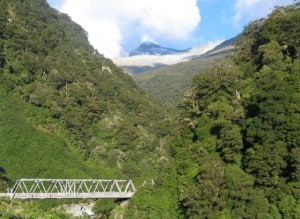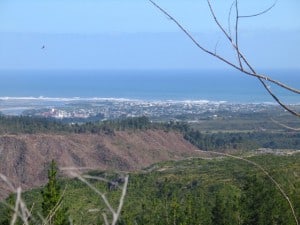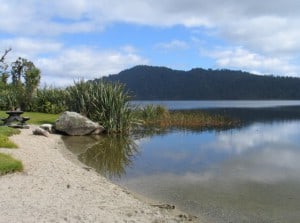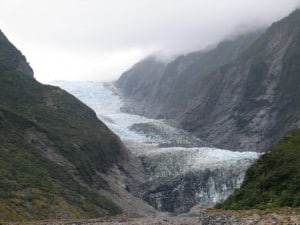[vc_row][vc_column][vc_column_text]
 Westland, South Island, New Zealand Gates Of Haast view to Mt Brewster 2423m. |
General InformationWestland District is located on the West Coast of the South Island of New Zealand. The District reaches from Kahurangi Point in the north to Awarua Point to the south. Bordered by the unpredictable Tasman Sea on the west and the towering Southern Alps on the east, Westland District stretches some 400 kilometres north to south. The district has a very high rainfall due to the prevailing northwesterly wind pattern and the location of the Southern Alps. Hokitika is New Zealand’s gateway to vibrant heritage, scenic splendour and lasting memories, and is the main township in the Westland District. |
 Westland, South Island, New Zealand Hokitika |
Attractions and ActivitiesWhat better way to explore the surroundings than to participate in the active pursuits that are available for the visitor to appreciate, what nature has richly endowed this District with. Walking opportunities are plentiful, water sports are incredible and relaxation guaranteed. White water kayaking is leading the way with some of the world’s most challenging rapids found in this part of New Zealand. Enjoy the extensive selection of walks, horse trekking, fishing, paddleboats and sailing are waiting for you to discover against the backdrop of crystal clear waters. |
 Westland, South Island, New Zealand Lake Ianthe. |
ShoppingWith the ample supply of locally sourced gold, jade, timber, clay, shell, bone, and fibres are all materials which are crafted into the treasures and heirlooms of today. These can be viewed and enjoyed in the many working studios and shopping galleries as each artist demonstrate their craft. When nature’s splendour inspires and the earth’s elements are plentiful, human creativity flourishes. |
 Westland, South Island, New Zealand Franz Joseph Glacier. |
HistoryPrior to the discovery of gold, the West Coast was home to Maori, who had settlements along the coast. They collected and carved pounamu (New Zealand Greenstone) which was used to trade with other tribes throughout New Zealand. Once gold was discovered the European started settling along the coast. A large scale gold rush had begun! Within two years there would be 30,000 people on the West Coast. Gold continued to be important in Westland for many years but has gradually been replaced by forestry, farming and, more recently tourism. The Franz Josef is a glacier located in Westland National Park on the West Coast of New Zealand’s South Island. It was named after emperor Franz Joseph I of Austria by the German explorer, Julius von Haast in 1865. The river emerging from the glacier terminal is known as the Waiho. The glacier is currently 12 kilometres long and terminates 19 km from the Tasman Sea. This cyclic behaviour is well illustrated by a postage stamp issued in 1946, depicting the view from St James Anglican Church. The church was built in 1931, with a panoramic altar window to take advantage of its location. By 1954, the glacier had disappeared from view from the church, but it reappeared in 1997. The Maori name for the glacier is Ka Roimata o Hinehukatere — the tears of Hinehukatere — arising from a legend: Hinehukatere loved climbing in the mountains and persuaded her lover, Tawe, to climb with her. An avalanche swept Tawe from the peaks to his death. Hinehukatere was broken hearted and her many, many tears froze to form the glacier. The area surrounding both glaciers is designated a World Heritage Site. |
|
 Westland, Okarito, South Island, New Zealand – Kotuku White Heron |
||
[/vc_column_text][/vc_column][/vc_row]
